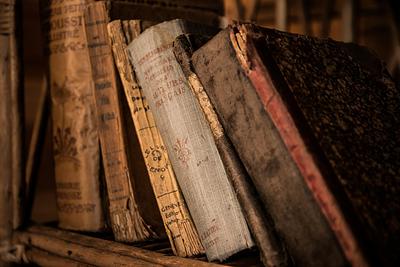Looking for all Articles by Sarah Smith?
Five things on researching for historical fiction
Sarah Smith, author of Hear No Evil, shares her top tips for getting to grips with research when you're writing historical fiction.

I never set out to write historical fiction. When I was younger, I took a very dim view of it. From my vantage point in the local library, the genre seemed to boil down to the suffering of illegitimate mill girls or the beheading of wayward princesses.
The past sneaked up on me unawares. It insinuated its way into my sentences, nudging out the breezy, contemporary prose I aspired to. I read novels by Sarah Waters, Joseph O’Connor, and Maria McCann. My thinking shifted and so did my writing.
I discovered I love research, and I’ve got some tips to make you love it too. I promise my suggestions aren’t dry and academic. No dusty tomes and hushed libraries (though I’m quite fond of them too, to be honest). There are some links to get you started. Some are free, some charge a subscription but check out your local library before you spend any money – many offer access onsite or remotely.
Read what they did
Get yourself a copy of the newspapers and magazines your characters would have picked up from street vendors or had delivered to their houses to digest at their leisure. See how the big issues of the day developed over weeks or even months and might have affected the people reading about them. Unexpected stories can surprise and challenge your retrospective view of history. Adverts can tell you what products were available, what people needed and wanted to buy, and how much they paid for them.
Try: British Newspaper Archive(this link will open in a new window)
Explore Old Maps
There’s something about looking at legends and street names and landmarks that makes history come alive. You can imagine someone finishing work at THAT shipyard, going into THAT pub, and turning up at THAT house with an empty pay packet. An old map of somewhere you live or know well alters your perspective and challenges your assumptions. A map of somewhere you’ve never been to gives you an insight into the lives of the people who lived there as well as a basic lesson in orienteering.
Try: NLS Maps(this link will open in a new window)
Make A Playlist
Search for era-appropriate music and listen to it as you type. I tend to avoid too many songs with lyrics because words muddle up my thinking. Try to choose widely: popular hits, classical music, opera, folk, and blues. A mix of what your characters might have heard at home, on the streets or at concerts. There are also ambient sound websites that include street recordings from the past where you can listen to the noise of traffic, buskers, street traders.
Try: Radiooooo(this link will open in a new window)
Collect Images
Paintings and photographs can really help visualise the locations in which your story is set. In the same way I make a music playlist, I search for time specific images. Paintings of landscapes and street scenes, and portraits of people from a variety of social classes, can help you describe your characters and the way they interact with the world around them. Depending on the period, access to photographs and film can provide alternative perspectives.
Try: Art UK(this link will open in a new window)
Visit Your Locations
Take a walk around a place and mentally peel away the layers to imagine what would have been there in the period your story is set and understand how your characters might have inhabited it. Changes in weather conditions can help you describe what clothes a character would wear, the facial expressions and physical bearing they would adopt, what type of transport they would use. If you can’t visit in person, use an online map with street view.